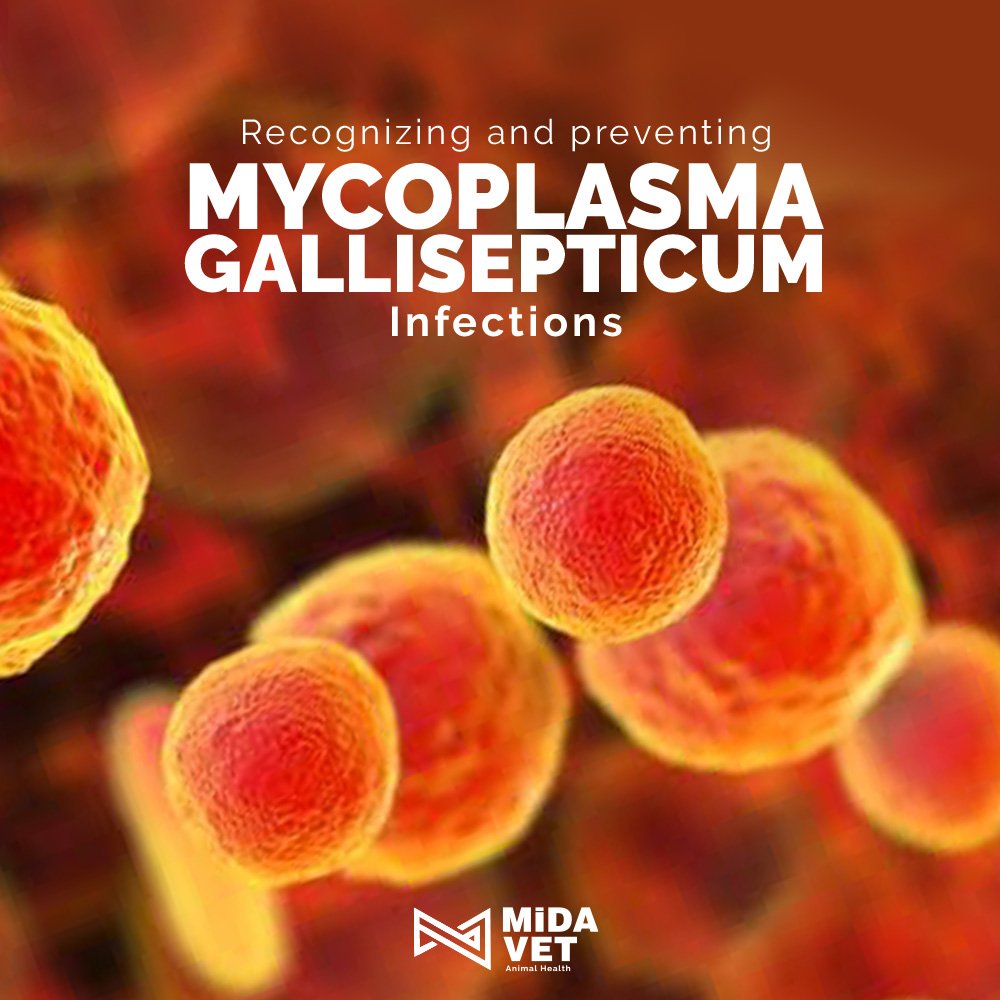MG is a bacterium that causes respiratory disorders in poultry. MG infection is known as chronic respiratory disease (CRD).
How do we know if what we see is MG?
MG usually causes only mild clinical signs and lesions in chickens. Symptoms include coughing, runny nose, difficulty breathing, and runny eyes. MG can also decrease growth rate, decrease egg production. However, chickens infected with MG become susceptible to infectious bronchitis, E. coli, Newcastle infections, especially if the poultry house is poorly managed. Although mortality is lower in adult animals, it can reach 30% in chickens infected with other respiratory diseases.
How does MG spread?
MG is a very fragile microorganism that can only survive for a few days unless it has a host. Infected animals can transmit the disease through reproduction and to their eggs, can be carried through contaminated feed and water, and can spread directly through body secretions (nose, eye discharge and faeces). Poultry utensils and equipment, feces and run-offs and utensils that have been associated with an MG outbreak can also contribute to the spread of the outbreak. Another factor is human transmission of the disease. MG can be housed for days in the clothing, shoes and equipment used by the people working in the coops. People may carry disease agents in their nasal cavities.
Healthy chicks are key to biosecurity management
The best way to control MG is to exclude MG with good biosecurity measures, starting with disease free herds. Start production with a lot of MG negatives. Minimize contact with other flocks if possible. If possible, make sure to change clothes and shoes when moving between herds. Make sure rodents and wild birds are kept away from your flock. Quarantine flocks that you suspect show signs of MG.
Proctection
Infected animals have a lifetime probability of developing MG. Antibiotics can suppress symptoms but cannot cure them. Even treated flocks continue to shed MG. Slaughtering the coop can be an inexpensive way to treat and deal with it, so prevention is the only effective way. After the removal of the flock, after an effective cleaning and disinfection, the MG-free flock should be started and the biosecurity risks threatening the flock should be kept away.
Raising MG negative flocks with effective biosecurity management starting from breeding and hatching is the backbone of the challenge.
Feed hygiene procedures should be strictly followed.
Care should be taken in the sanitation of drinking water. It should be checked that the sanitizers (chlorine, peroxide, etc.) used to provide extra protection against contamination from the source to the animals are at a level to form residuals. Water should be analyzed frequently for seasonal changes.
Effective cleaning and disinfection should be a business culture.
Zero tolerance should be shown in rodent and pest control.
Cleaning brush and foot baths to each house entrance in farms with farm entrance and more than one house. Selection of disinfectant suitable for environmental conditions is important. If possible, shoes should be changed during the transition between poultry houses.
It should be ensured that the working personnel comply with the hygiene rules, the cleaning and change of the clothes that they often work in the henhouse.
It is important to control the equipment transfers between the henhouses.
Sources
Mycoplasma gallisepticum (MG) Infection in Poultry: Recognition and Prevention (FS-1008).
University of Maryland Extension and Maryland Poultry. The information presented has met UME peer review standards, including internal and external technical review.
David H. Ley, DVM, PhD, Professor, Department of Population Health and Pathobiology, College of Veterinary Medicine, North Carolina State University
